Mediation is a way to resolve disagreements. A mediator helps people talk and find a solution they all agree on. The process starts with an introduction, then people talk, focus on important parts, and finally agree on a solution. The mediator doesn’t have power; they only help people talk and find a solution together.
Understand All About The Mediation Process.
What is The Meaning of Mediation?
Mediate and mediation are words derived from the Latin word “medius,” which means “the Middle.” The Merriam-Webster Dictionary gives us:
Mediate \me-de-at\ vb-at ed; at ing: meaning either to interpose between parties to reconcile them or reconcile differences.
The action of a mediator is to place “oneself in the middle of a conflict. There are many processes available to aid individuals in reconciling conflicts.
However, in judicial situations, various alternatives to dispute resolution are defined. Examples include mediation, negotiation, and arbitration.
What is the Mediation Process?
Mediation is a voluntary process in which the disputants strive to resolve their dispute satisfactorily. The mediator is a facilitator in this process and helps the disputants reach an agreement. The mediator does not impose solutions, assess punishment, administer judgment, decide who is correct, or persuade the parties to any side of the dispute.
A mediator in managing conflict is, by definition, an outsider. In mediation, the mediator can bring conflicting parties to the negotiation table, facilitating the reach of an agreement.
He can also consult the disputants, ascertain their integrative concerns, and then assist the disputants in reaching an agreement acceptable to both parties.
The mediation process includes anger management, conflict resolution, active listening, creativity, and a guided process to facilitate mediation. Mediation between cooperative disputants requires that the parties agree to:
- Express their feelings and points of views
- Identify their needs
- Clarify issues
- Understand the other party’s view
- Explore solutions
The goal is that the disputants will be able to negotiate an agreement that is satisfactory to both parties.
To enable individuals to operate as a mediator, the framework we present is that change hatches conflict, which should be managed by some resolution method that may require mediation.
We have organized this book to present a brief perspective on change in the workplace and the stress and conflicts that accompany change. Then, we give a framework for understanding conflict and typical behavior patterns when individuals are dealing with conflict.
With this framework in mind, the reader can begin to understand the processes and roles that a mediator should use to operate in ‘the middle’ of a conflict without getting pulled into the conflict. Several tools for the mediator to use in a mediation process are presented.
Finally, aspects of a mediation program are presented for those who are striving to prevent the potential of costly conflicts.
Change in Workplace
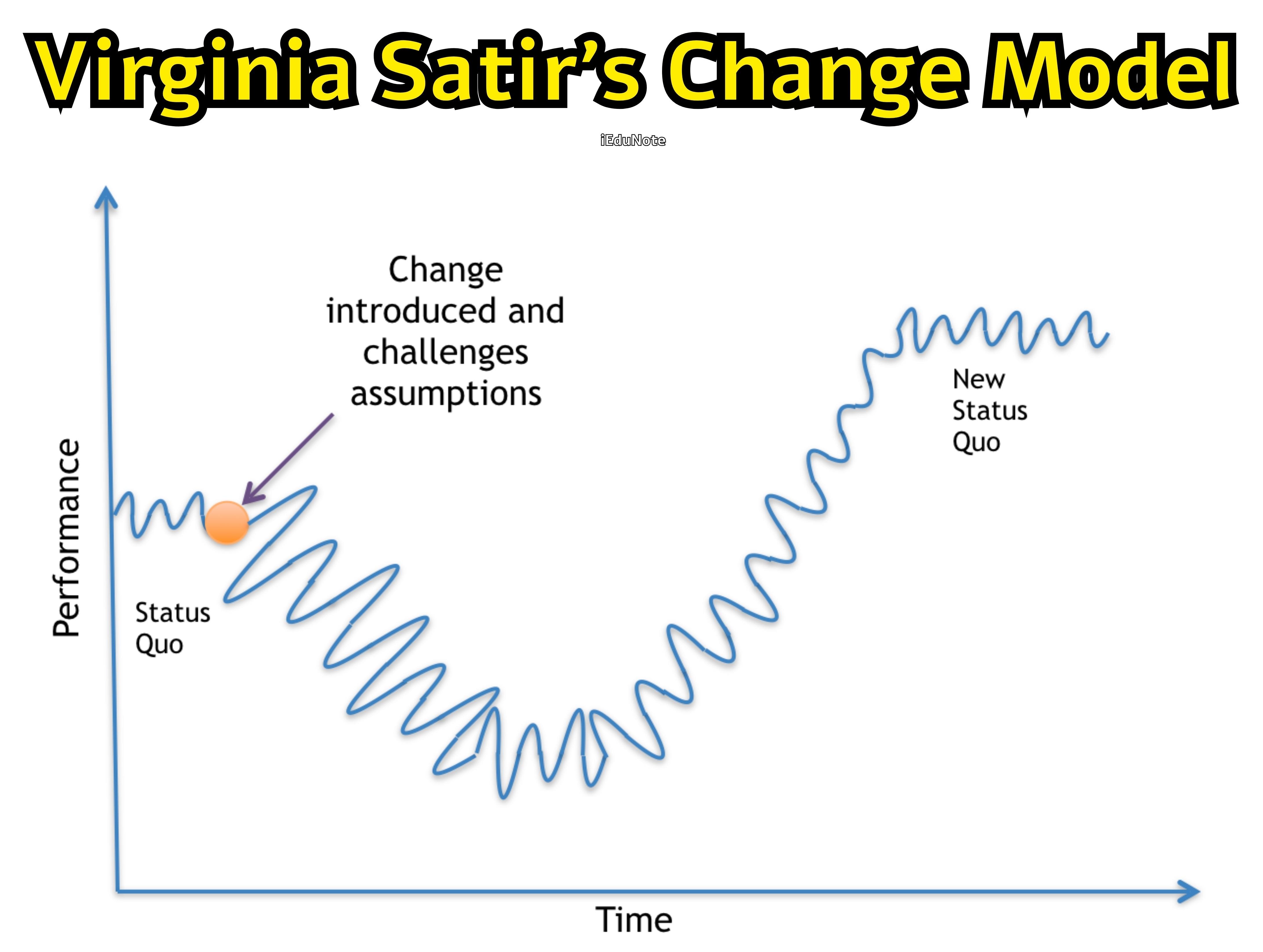
It has been said by many that the one constant in life is that change will occur. For each individual, changes occur internally and externally.
Internally, our feelings, emotions, commitments, and attitudes are examples of aspects that vary constantly. Externally, the people around us are changing constantly, as are organizations, environments, and tools.
When change occurs, we are sometimes responsible for the change, and at other times, the change is imposed on us.
We may desire to change jobs and may activate an effort to search, interview, and move into a new job; on the contrary, a change imposed on us would be a ‘lay-off’ that forces us to leave our current job.
When change occurs, whether perceived as positive or negative and whether self-imposed or a change driven by someone else, there are some common variables that always accompany change. Change is always accompanied by varying levels of resistance, stress, conflict, and behavior changes.
Our common reaction to change is to have a heightened stress level. Stress is not an undesirable aspect of a job – it just must be managed.
Stress that is above or below a certain comfort and motivational level will cause people to look for relief. We search for a resolution to the conflict that causes the uncomfortable stress.
Under distress or eustress, we move toward personal behavior patterns that we are most comfortable with, whether our behaviors are productive or counterproductive.
Often, people believe their patterns of behavior are the obvious, rational, or expected behavior rather than recognizing the use of familiar patterns of behavior as habits.
In the workplace and at home, every individual constantly deals with complex combinations of changes and reactions generated by themselves and all the colleagues and constituents with whom they interact. Conflicts will occur in the workplace due to these complexities.

Nature of Mediation
Mediation is a process of structured negotiation conducted by a third party with the necessary skill, training, and experience to facilitate negotiation between the conflicting parties actively in order to reach a mutually accepted solution (Henderson, 2006).
A mediation session can be designed in any manner that the conflicting parties believe would be most useful for managing their conflict.
A mediator does not impose a solution but creates a conducive atmosphere in which the disputants can find a better resolution to their problems (Kamal, 2006). Mediation always focuses on the future rather than past behavior (Leibmann, 2000).
It is evident that the mediators, who are hired, appointed, or volunteered to help in managing the process, should have no direct interest in the conflict and its outcome and no power to render a decision. They have control over the process but not over its outcome (Nabatichi, Bingham, & Good, 2007).
Algert & Watson (2007) rightly point out that “Mediation is an act of outside intervention to assist adversaries to resolve a shared conflict. It works to create a peace process to engage adversaries in a constructive dialogue or to transform an established dialogue process into a conflict settlement and peace-making one.”
Generally, if and when bi-partite negotiation fails, then third-party mediation is often used to manage the conflict. Mediators are independent and impartial persons who work with conflicting parties and make attempts to work out the best possible solution acceptable to both parties.
Types of Meditation
There are five types of mediation;
- Settlement mediation.
- Facilitative mediation.
- Wise counsel mediation.
- Tradition-based mediation.
- Expert advisory mediation.
These patterns are discussed briefly as follows:
Settlement Mediation
In settlement mediation, the mediator starts with the separate positions of the parties and encourages incremental bargaining until the parties have moved into a position of agreement somewhere between their opening positions.
The mediator’s main role is to determine each party’s “bottom lines” and use persuasive interventions to move the parties in stages to the point of compromise.
This pattern is appropriate where an ongoing relationship between the parties is not of prime importance and where the conflicting issues are contractual. It is very helpful in allowing parties to settle the terms on which the parties will serve their ties or determine the amount to be paid by one to the other.
Facilitative Mediation
Facilitative mediation is an interest-based and problem-solving approach to mediating a conflict. It encourages parties to move away from positions and to explore the needs that exist behind those positions. The mediator involves conflicting parties in focusing on the future and solving problems rather than assigning fault and addressing interests instead of blaming and justifying (Jarrett, 2009). Facilitative mediation is appropriate for any conflict especially where the parties will continue to have an ongoing professional or personal relationship.
Wise Counsel Mediation
In wise counsel mediation, mediators evaluate the merits of the case, focusing not on the parties’ rights and positions but on the broader interests and concerns of the parties.
The main goal of this mediation is access to justice in the sense of a fair forum, efficient conflict management, and long-term interest-based solutions (Alexander, 2008).
Tradition-based Mediation
It is the oldest form of mediation and is almost similar to wise counsel mediation. The main differences between these two patterns of mediation relate to the objectives of the mediation and the nature of party interaction.
In wise counsel mediation, mediators focus on the negotiation of party interests, whereas tradition-based mediators view the values of the community as taking priority (Alexander, 2008).
In tradition-based mediation, mediators are problem-oriented and are usually sought out for their wisdom, status, and persuasive presence rather than their technical expertise.
Tradition-based mediators generate an open-ended dialogue among the disputants, focusing on the restoration of relationships within the group, reconciliation, interests, and values of the community, and frequently involve public symbolism (Boulle, 2005).
Expert Advisory Mediation
Expert advisory mediation involves a high level of mediator intervention in the conflict and adopts a predominantly positional bargaining approach. In expert advisory mediation, an expert is engaged by the parties to investigate and use his/her own expertise to determine the conflicting issues.
The expert may make a determination with or without submissions by the parties and act within the terms of reference set out by the parties (Linden, 2004).
The primary goal of this mediation is to provide excellent advisory service for managing conflict efficiently, which in turn encourages the disputants to reach a mutually negotiated agreement.
Approaches to Mediation
When a conflict exists between disputants, a person in the position to intervene must decide which approach is needed. This consideration must take into account not only the current conflict but also the long-term relations and interactions of the disputants with each other and with the intervening party.
The major factors of concern are;
- Determination of how much influence the disputants have in determining the process and settlement to the current conflict.
- How much influence does the intervening party have on the process and settlement?
- How much effort, time, and resources the approach will take?
The following figure shows the different intervention approaches based on the level of influence of disputants and third parties on the conflict settlement process.
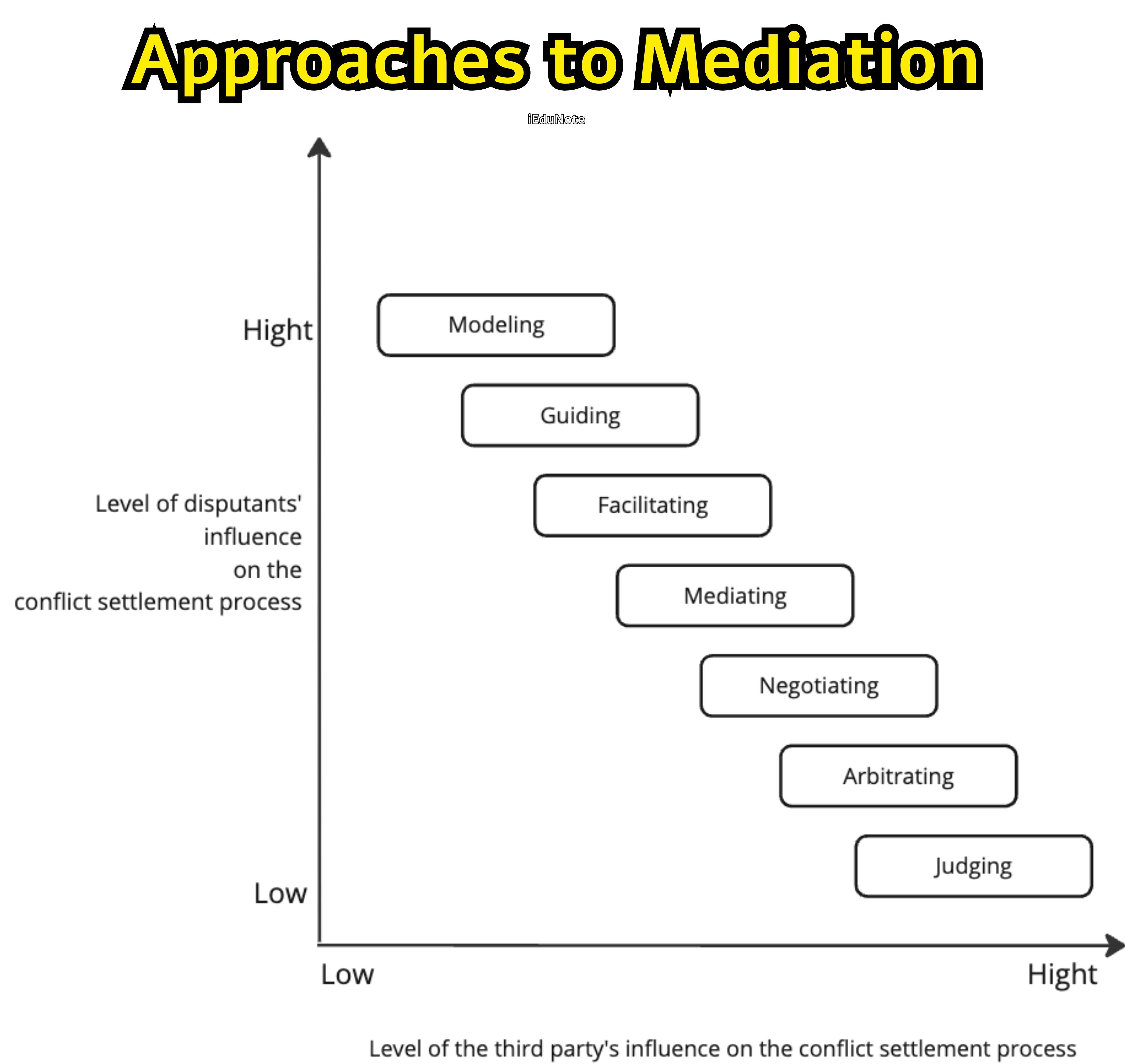
There are seven approaches (such as modeling, guiding, facilitating, mediating, negotiating, arbitrating, and judging) for managing conflict.
Every approach may differ from each other in terms of norms of intervention, especially the extent of communication between the disputants, which is briefly outlined as follows.
Modeling

Mediators intervene only to explain his/her pattern of behavior regarding conflict. To thoughtfully and intentionally model workplace behavior requires skills in:
- Self-awareness of behavior and
- Managing one’s emotions to demonstrate consistency.
Guiding
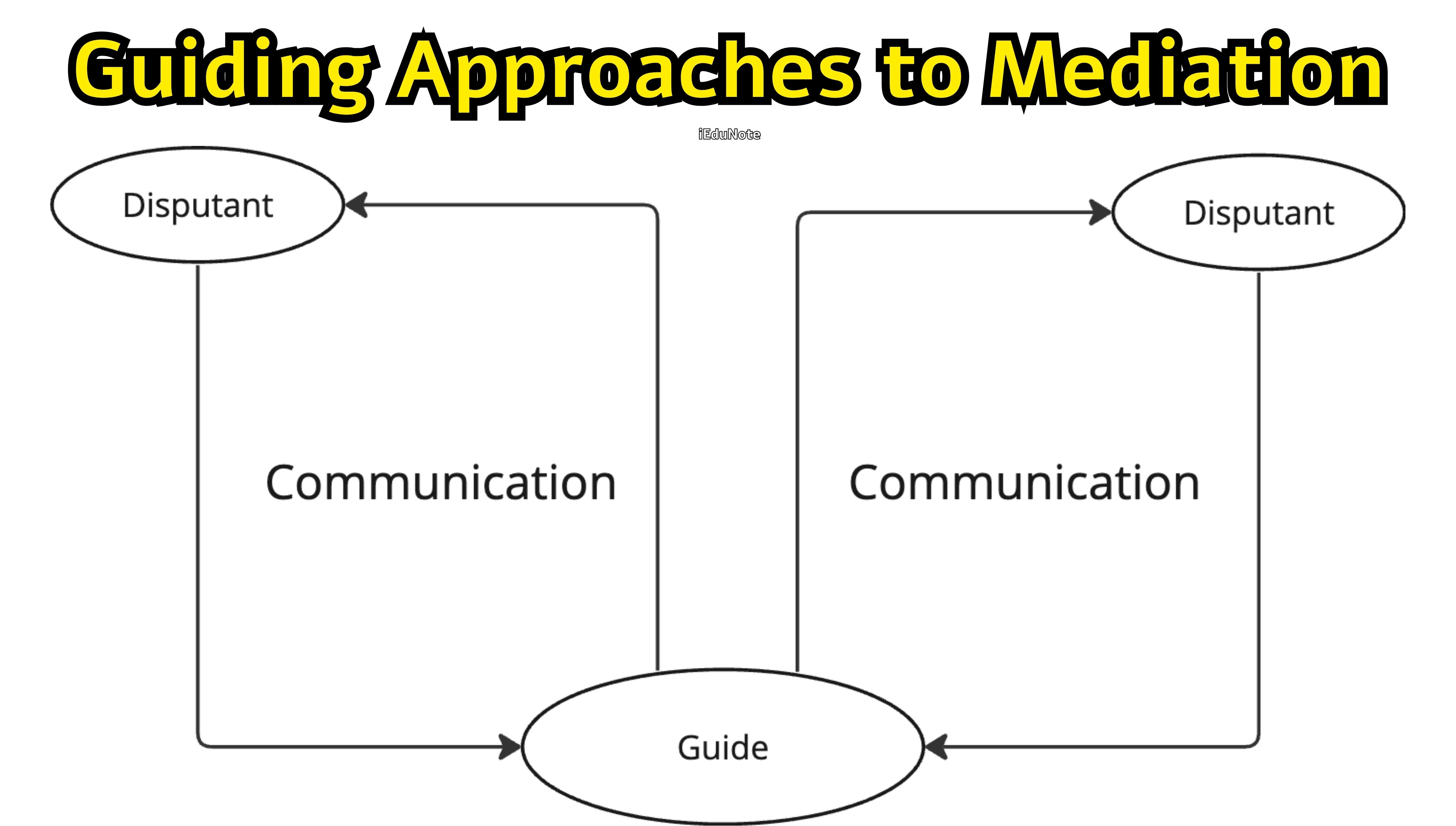
The mediator meets with disputants to supervise the conflicting issues only.
Effective guidance requires skills in:
- Active listening,
- Perspective-taking (seeing other’s position)
- Timing to guidance is perceived as supportive.
Facilitating

The mediator enters into an ongoing relationship to help the disputants to manage conflict.
Bringing disputants together to assist and support them in managing their conflict requires skills in Impartiality to support all disputants.
Mediating
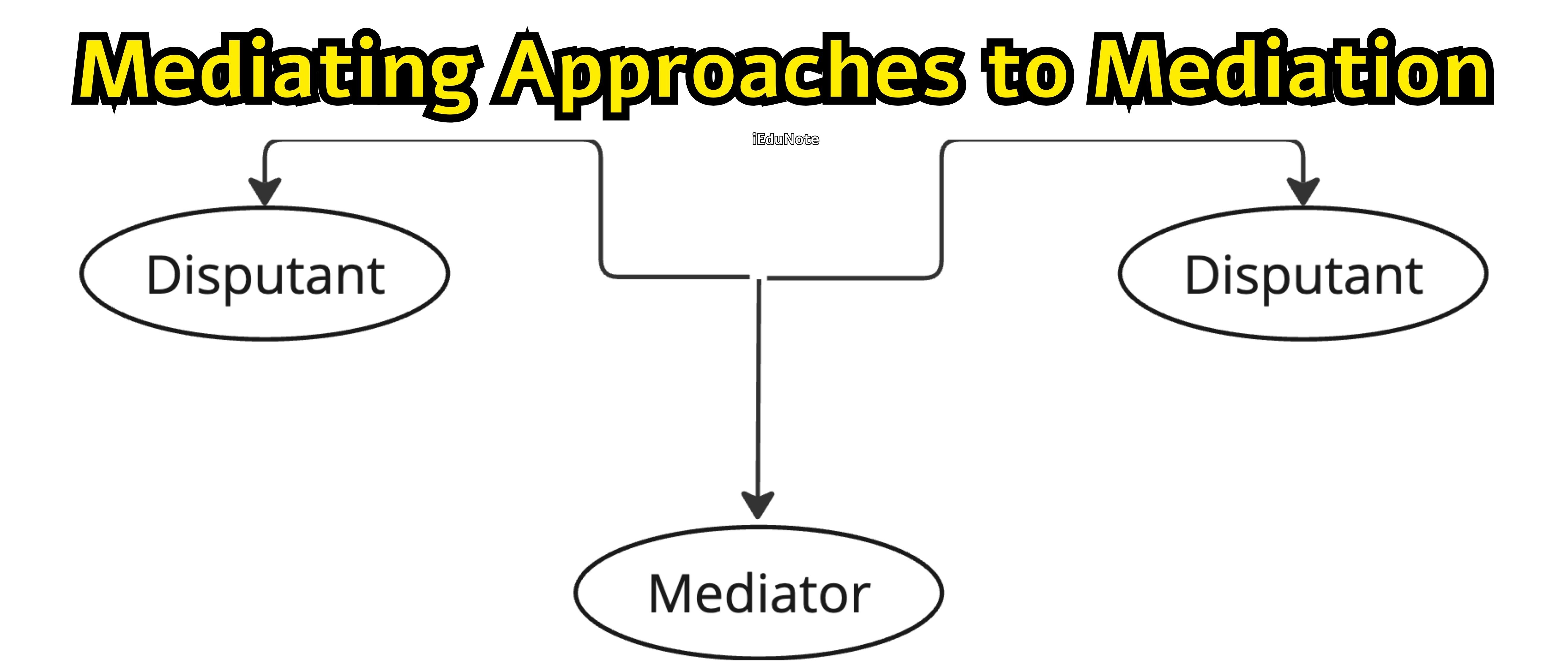
Disputants voluntarily work with a mediator to reach a mutually acceptable solution. Using a formal mediation process to generate success requires skills in the following:
- Neutrality
- Nonthreatening confrontation
Negotiating
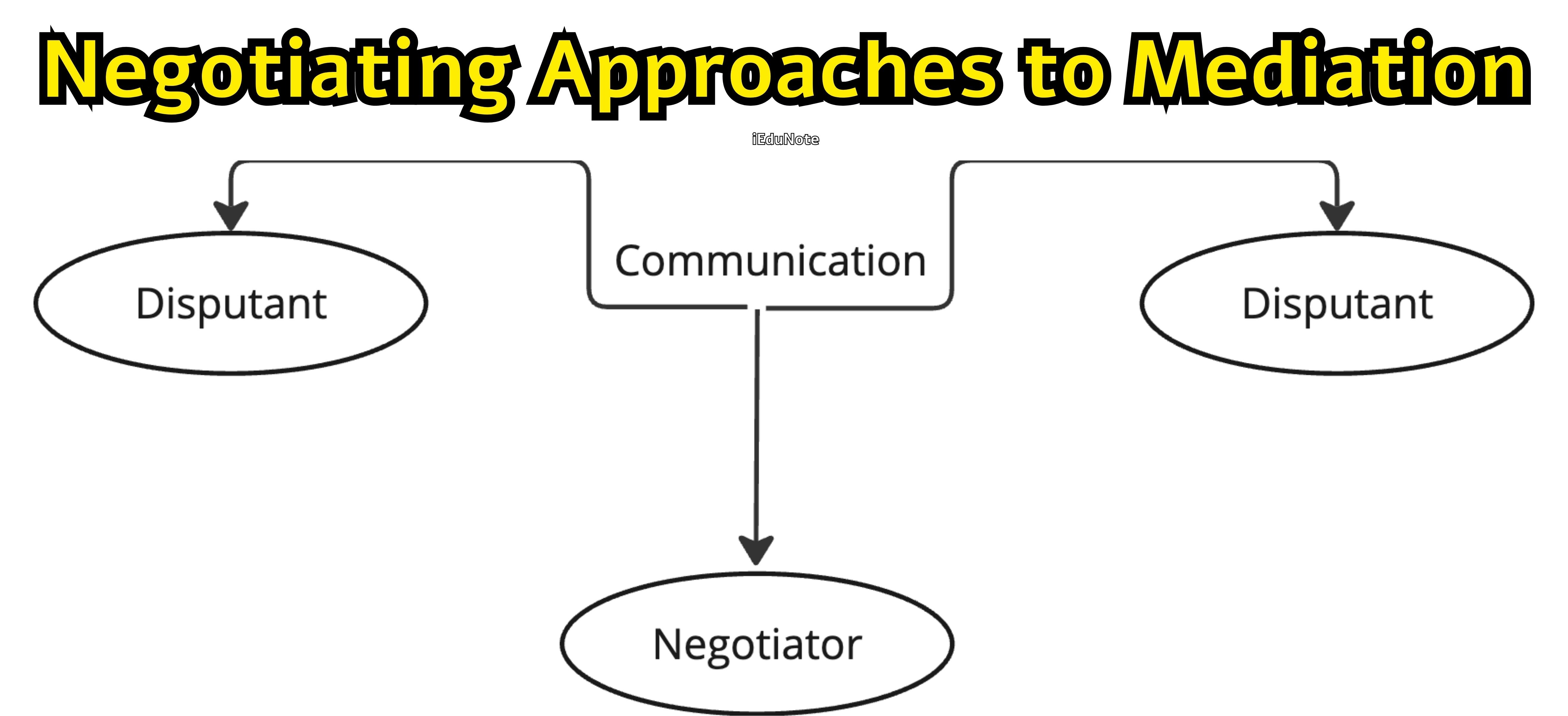
The mediator is more directive in reaching the best solution to a negotiated agreement. Deciding the outcome of the dispute based on bringing the disputants together requires skills in the following:
- Consequence analysis
- Decision-making
Arbitrating

The mediator intervenes to help the disputants manage the conflict by reaching a decision. Arbitrating requires skills in:
- Information gathering,
- Consequence analysis,
- Decision making.
Judging

The mediator intervenes to decide outcomes regarding conflicting issues by applying standard procedures and policies.
Judging requires skills in:
- Understanding
- Clear communication
- Control of processes
In the different approaches discussed, many factors must be considered.
Two important factors are:
- who is primarily communicating with whom, and
- who decides if the resolution is satisfactory.
It’s important to note the level of involvement of the third party regarding influence on the outcome and to determine the extent of communication between the disputants in each approach in the conflict settlement process.
There are several approaches to mediation. The following two approaches are commonly used in managing conflict.
The mediator can adopt any one of these approaches or a combination, depending on the specifics of the case, the nature of the parties, as well as their own beliefs, experience, and expertise.
Evaluative Approach
This approach in mediation is a process where the mediator provides guidance as to the appropriate grounds for settlement based on the law or their experience and knowledge in a specific field of expertise (Kozan, Ergin, & Varoglu, 2007).
The mediator’s experience and knowledge help guide the parties toward a settlement. In the evaluative approach, the mediator helps the disputants realistically assess the strengths and weaknesses of their cases and claims.
The mediator offers solutions and even tries to predict the likely outcome in court if the mediation process fails. As the mediator plays a dominant role, they influence and sometimes determine the outcomes of the mediation.
he mediator may review relevant documents to understand the conflict’s nature, its substantive issues, and professional aspects, suggesting areas of agreement, solutions, and compromises, urging the parties to accept a particular settlement.
Predicting potential outcomes might pressure the parties to decide on their options; an evaluative mediator may assist the parties, even encouraging them to consider these options. Mediators might introduce their own suggestions, ideas, and proposals.
Although they have no binding authority, evaluative mediators might use their experience to suggest solutions or compromises, guiding the conflicting parties toward them.
Transformative Approach
This mediation approach focuses on assisting parties in reaching an agreement. The primary goal of transformative mediation is healing and reconciliation among the disputants and restorative justice.
Mediators are chosen based on their relationship skills and knowledge about conflict causes, psychology, and behavioral science (Bush & Folger, 2004; Gaynier, 2005).
In transformative mediation, the mediator’s role is to foster an environment where the conflicting parties can engage in transformative dialogue. Through this, the parties are empowered to express their feelings, needs, and interests and to recognize and acknowledge those of the other party.
Folger & Bush (2004) view conflict as an opportunity for problem-solving through transformation. They believe that conflicts hold the potential for valuable transformation in two aspects: empowerment of the parties and acknowledgment of recognition.
Empowerment: The conflicting parties believe they can identify and define their issues, and they take responsibility for finding a mutually acceptable solution.
Recognition: The parties can understand the other party’s perspective and the reasons for their proposed solutions (without necessarily agreeing).
A transformative approach offers educational value for the parties. By reflecting on the process, they might utilize similar techniques to avoid future disagreements and conflicts. They learn to view conflict as a beneficial event for both parties.
This approach’s potential long-term effects can benefit both the parties and society, promoting moral growth and the capacity to address conflicts healthily.
The mediator helps the parties identify and assess their interests, providing clarity about their goals, resources, options, and preferences. This understanding aids them in making effective decisions, leading to better and more efficient outcomes.
Under this approach, the mediator leaves the decision-making to the parties, assuming they are best placed to decide what’s right for them.
They trust the parties’ ability and judgment to reach the best outcome for their conflict. The mediator isn’t judgmental about the parties’ claims, positions, or chosen outcomes. Instead, they encourage the parties and guide the process, helping them come up with innovative proposals and solutions.
This mediation style empowers the parties by enhancing their sense of capability to handle the conflict’s issues and challenges. The mediator understands that truly comprehending the roots of the conflict requires time and patience.
The aim is transformation and genuine dialogue, laying the foundation for creative, freely-made, and mutually accepted solutions.
Elements of Mediation
Mediation is a process that employs a neutral person or persons to facilitate negotiation between the conflicting parties in order to reach a mutually accepted solution.
The mediators, who are hired, appointed, or volunteer to help in managing the process, should have no direct interest in the conflict and its outcome and no power to render a decision. They have control over the process but not over its outcome.
Rabie (1989) stated that “Mediation is an act of outside intervention to assist adversaries to resolve a shared conflict.
It works to create a peace process to engage adversaries in a constructive dialogue or to transform an established dialogue process into a conflict resolution and peace-making one.” In this definition, there are four elements involved in an act of mediation. These are:
- Mediation is an act of an outsider (Neutrality).
- Mediator assists adversaries in resolving a conflict (Facilitation).
- Mediation is a component of a conflict resolution and peace process (Ripe Conditions).
- Through mediation, parties engage in a constructive dialogue (Compromise).
Mediator Acts as an Outsider
A mediator in a conflict is, by definition, an outsider. The term third-party mediation is derived from this inherent characteristic of the act of mediation.
This notion of outsider has a host of meanings. It does not simply mean that the mediator comes from abroad or from another country.
First, it means that the mediator is an outsider to the conflict and should not be a party involved in the conflict. Nor should the mediator be seen as aligned with or supportive of one particular party to the conflict.
This requisite of mediation is called the neutrality principle. Whenever one party to the conflict perceives the mediator as non-neutral or supportive of the adversary, successful mediation cannot take place because the mediator’s role in the expected settlement would be in doubt.
The mediator’s neutrality is important to create an atmosphere and psychology of confidence and trust in the negotiation process among the disputants.
Mediator’s Facilitative Role
A mediator can bring conflicting parties to the negotiation table and facilitate them reaching an agreement. They have played a slightly greater role in negotiation as a third party. Suppose the two parties want to come to the negotiation table.
Even though they agree to begin face-to-face talks, they may still mistrust each other’s intentions, objectives, goals, strategies, and tactics.
There can be a lot of disagreement over the timetable for talks, the agenda, the venue, the level of representation, and the time-frame within which talks should be concluded.
More complex disagreements may arise on issues of ceasefire and the behavior of the two sides during the negotiations.
During negotiations, each party may try to seek an advantage over the other through bargaining. This is where a mediator has a role to play. The mediator can consult the two sides, ascertain their respective concerns, and then assist the two sides in avoiding disagreements in preparation for negotiations. When disagreements arise, the mediator can propose solutions or alternatives.
Moreover, the mediator can assist the parties in working out the settlement agreement if negotiations progress towards a compromise.
Formulating a settlement to terminate an armed conflict is not an easy task. The settlement has to be mutually acceptable to the parties.
They should feel satisfied and comfortable with the outcome and be willing to make sacrifices, as well as be ready to accept and implement the settlement.
Parties may also seek mutual guarantees. Here, the mediator’s role is to facilitate the working out of the settlement by being a referee, a neutral thinker, and a constructive planner.
Mediation Under Ripe Conditions
Can a mediator just walk into a conflict, organize a negotiation process, and make the parties agree on a settlement?
The plain answer to this question is ‘no,’ although people sometimes might think that the answer ought to be ‘yes.’ Such an arbitrary act of mediation can be a disaster, especially for the mediator.
If a conflict involves a ‘sovereign’ state, uninvited mediation by an outsider would be immediately seen as an interference with the country’s internal affairs and an affront to its sovereignty.
If the conflict is between the state and a rebel movement, uninvited mediation would be perceived by the rebels as part of a conspiracy against them by the state.
The lesson to be drawn is simple: Mediation in a conflict requires the consent of both parties to the conflict. Indeed, mediation works better when there is bipartisan willingness to negotiate.
Mediation and Compromise
Generally, a compromise solution to a conflict involves the seeking of joint solutions by parties, and a mediator can play a constructive role in such circumstances.
The role of the mediator is to make compromise possible for parties that are still locked in the conflict. Enabling parties to compromise requires a series of activities performed by the mediators (Rabie, 1989). These are:
- Initiate dialogue among adversaries and induce cooperation between competing groups.
- Facilitate analysis of causes of conflict and prepare for negotiations to end them.
- Sustain and foster direct or indirect negotiations through improved or added channels of communication.
- Bridge gaps between adversaries through the establishment of direct human contacts and help antagonists discover common goals that require joint actions.
- Enhance the chances of success in resolving conflict through the introduction of fresh ideas and new creative proposals.
- Simply provide a forum for declaring the acceptance of compromise settlements that could not otherwise be declared.
The Mediation Process
Mediation as a means of conflict resolution is not a one-shot activity. A mediator cannot just come into a conflict situation, try his hands at a settlement, and then fly back. In real life, conflict resolution does not happen in such a fairy-tale manner.
Mediation is a long, arduous, and often frustrating exercise. Mediation can suffer setbacks and even total failure. In the process of mediation, negotiation between parties can break down, and the conflict may even escalate.
Mediation is a multi-stage process. It is important to remember that the process is flexible. The mediator must use flexibility in controlling the stages of mediation so that a suitable resolution is found.
Rigidity through the stages of the process can doom mediation. However, each stage has important aspects that lay the groundwork for the next stage.
Necessity of Mediation Process
While there are countless possibilities of human interactions that can use a mediation process, two major categories can be identified: the need for a change in the basic pattern of a relationship or the need to solve a problem in the relationship.
In reality, most mediations have varying combinations of these two categories.
| Change in Basic Pattern | Solve a Problem |
|---|---|
| Identify the basic pattern. | Identify the problem. |
| Describe the characteristics of the basic pattern. | Describe the drivers that cause the problem. |
| Focus on parties’ responsibility for change. | Discern controllable, influential, and unchangeable drivers. |
| Discuss expected resistance to change. | Discuss realistic constraints on solutions. |
| Generate descriptions of desired basic patterns. | Generate possible solutions. |
| Discuss the changes required for the desired basic pattern. | Evaluate the tradeoffs for the various solutions. |
| Plan steps that ‘unfreeze’ resistance to change. | Analyze the quality of the solutions. |
| Plan steps that create momentum for desired change. | Select a solution. |
| Plan steps for making the change permanent. | Write an agreement that describes the solution to the problem. |
Goals in the Mediation Process
Introductory Statement:
- Mediator establishes their role with the parties.
- Mediator establishes rapport with the disputants and an acceptable level of rapport among the disputants.
- Mediator starts building a list of issues (briefly walks through the process).
- Mediator eases the fears and concerns of disputants, particularly working to eliminate the stress that they are trapped or will be forced into an agreement.
Initial Statement from Disputants:
- Everyone is to be valued and validated as a person whose values, needs, and beliefs are respected, even if not agreed with. Disputants share statements that have not been heard before, particularly moving to understand the other party’s reasoning and/or reactions, even if remaining in disagreement.
Two-Way Exchange (Mediator is very active):
- Disputants are empowered to operate in the process and control aspects of the process; they choose the issue they want to discuss first; they take turns; they engage as active listeners.
- Disputants vent issues they believe drove them to the current positions.
- Disputants expose minor issues that may be triggering strong responses. If these issues are truly minor, they can be acknowledged as understandable and left or linked appropriately with the major issues.
- Mediator notes and exposes patterns of behavior that lack cooperation.
- Avoidance in the form of spin-offs, dead ends, and diversions.
- Competition in the form of blaming, hurting, and pulling on the mediator to be on their side.
- Disputants focus on norming (agreeing) when possible.
- Mediator uses what he or she sees, hears, and feels in order to translate for the other party.
Disputants Begin to Focus on Major or Priority Issues that Need Resolution:
- Mediator helps disputants find emerging win-win outcomes.
Formulation of Issues and Clarification:
- Disputants make issues sharp and focused.
- Mediator focuses on major issues, rather than each and every incident.
- Mediator reinforces interdependencies by pushing parties to understand and validate each other’s perspectives.
- Mediator classifies the differences that still cause unmet needs for the disputes.
Opinion Generation and Finding a Solution:
- Mediator structures the process so that options are generated before they are evaluated.
- Mediator directs the dispute toward patterns of behavior that incorporate cooperation.
- Everybody evaluates and reconciles the options.
- Disputants agree on options for settlement.
Writing and Reality Testing of MOU:
- Mediator pushes disputants to test the long-term reality of the agreement by asking questions.
- Mediator checks with disputants to make sure the MOU is realistic, specific, and advanced.
- Mediator writes an MOU in terms demanded by the parties.
- Mediator assures that significant details of the solution are captured in the MOU.
Closure:
- Mediator affirms good work to help the agreement to get along.
- Mediator closes the mediation with instructions and descriptions of follow-up actions.
Characteristics of a Successful Mediation Program
Mediation programs have been implemented in schools, businesses, and communities. The purpose of these programs is to provide resources that will improve the environment for participants by actively addressing conflicts.
Conflicts that are ignored often escalate into aggressive or even violent behavior. Therefore, the management of conflict for conscious, productive outcomes is at the core of a mediation program. A well-designed program will benefit from the following characteristics:
- A diverse team of conflict managers who can discern the nature of conflicts and determine the most appropriate dispute resolution strategy to use will be available.
- Skilled mediators are available in a diversity that will accommodate different disputants’ biases and needs.
- People in the organization will have knowledge of the availability of the program.
- There will be widespread acceptance of the value of the program.
- Administrators, supervisors, leaders will all support the program.
- Appropriate coordinators for the program will be supported.
- Conflict managers and coordinators will participate in ongoing training.
- The Conflict Management Program will be considered a part of the organization’s improvement plans.
- External constituencies and supporters will be informed of the program and provide support as necessary.
Principles of Mediation
- Two winners are desired rather than one winner and one loser, or all losers.
- To have two winners, there must be cooperation instead of competition.
- To truly cooperate, the parties must have equal power in this mediation, regardless of any other status that they may have in their relationship.
- While the past must be mutually understood, even if not agreed upon, by all parties, the future is the primary focus.
- To focus on the future, concentration must be on the interests and needs of the parties and not their current positions.
- To truly understand needs, we must not only consider the facts and thoughts the parties can share, we must also consider their feelings and emotions.
- An environment where facts, thoughts, feelings, and emotions are to be shared must be based on openness and honesty.
- To trust that this kind of environment is possible, the parties must choose to be positive rather than negative about the prospects of success.
- Therefore, mediation must be a voluntary experience, not a mandated one, and
- The outcome must be a mutually agreed-upon solution, not an order that all must abide by.
Cross-cultural Experiences of Mediation in Managing Conflict
Several countries are continuing to develop new and creative techniques for managing conflict through third-party mediation. Recently, alternative dispute resolution (ADR) has been frequently used to manage conflict as a technique of third-party mediation.
The USA, Canada, Australia, and the United Kingdom have become pioneers in the field. The experiences of third-party mediation in different countries are discussed briefly as follows:
USA Experiences
The United States has been practicing court-sponsored ADR earlier than other common law jurisdictions.
They have accumulated vast experiences, which can be very useful to other common law countries. These experiences also underline the need for training judges, lawyers, and mediators to make the institution effective and successful.
It also emphasizes the necessity of institution-building to apply ADR within the realm of the judiciary. Mediation has become part of the formal dispensation of justice, aided and promoted by the state.
The US has followed a case management approach in ADR. This approach involves the court actively participating early in the case to analyze the specific issues presented by a particular lawsuit.
The court works with counsel and the parties to manage the structure of future proceedings to achieve the fastest and most cost-effective solution to the dispute.
The goal of this approach is to structure pre-trial proceedings in a way that compels the conflicting parties to exchange additional information on key issues as early as possible.
By doing so, the parties are in a continually better position to evaluate those key issues as the case proceeds, hopefully facilitating earlier out-of-court settlements (Taylor, 2000).
Canadian Experiences
Canada followed the footsteps of the US. However, in Canada, ADR is more vigorous, comprehensive, deliberate, planned, and regulated. Canadian courts use the same case management techniques developed by US courts as a preparatory step for sending disputes to ADR. Additionally, the Canadian courts send disputes to ADR mandatorily.
Case management and mandatory mediation are complementary and integrated programs designed to improve the judicial system by reducing cost and delay.
In Canada, the issues are clarified and narrowed down first, and then most disputes are sent to ADR with a high success rate.
If mediation fails, the cases move to the pre-trial settlement conference, where the judge plays a predominant role in settling the dispute before trial. The success rate here is also considerable. Ultimately, a very meager percentage of cases are left for trial.
Private mediators are fast replacing the panel of mediators prepared and offered by the court. Mediation centers exist in every province of Canada where mediation is actually conducted. Petty compoundable offenses are increasingly being settled out of court predominantly by mediation.
Canadians have rightly used their network of legal aid services to meet the needs of ADR services, which is an excellent model for facilitating access to justice.
Australian Experiences
Australia has a long history of informal ADR at different levels and sectors, which has always received adequate state patronage, support, and assistance.
However, court-sponsored ADR, a modern international trend, has only recently been appreciated in Australia, albeit with clear perspective and determination.
In a letter from the Attorney General in June 2008, the National Alternative Dispute Resolution Advisory Council (NADRAC) was requested to make recommendations to make ADR services more extensive, comprehensive, and fruitful.
NADRAC has advocated not only for court-sponsored ADR but also for pre-proceedings or pre-action ADR, considering it more important and assigning a definite role for the courts in it. It has also emphasized the importance of case management, which is the decisive stage for the disposal of cases, whether by ADR or judicial pronouncement
NADRAC has called upon the government to declare and detail a national ADR policy, principles, plans, and programs. This attempt can put ADR on a stronger footing (Darling & Fogliasso, 1990).
UK Experiences
Traditionally, arbitration is the preferred form of ADR in the UK, with most disputes usually being settled through arbitration. The ADR system in the UK received a significant boost from Lord Woolf’s report in 1996.
In his report, he emphasized the need for massive reforms in the justice system in England. Lord Woolf suggested that case management techniques and practices developed in North America could serve as a solution to the issues of delayed, fragmented, and costly litigation, where parties dominate the procedure to the advantage of the wealthier side.
Following the report, ADR has played a significant role in settling disputes. Recently, the government has undertaken some pilot projects on mediation at different levels with considerable success (Acland, 1996).
Conclusion
Mediation, originating from the Latin term “medius,” meaning middle, is typified as a voluntary tactic for dispute resolution. Sitting in the middle of a conflict, a mediator doesn’t have the authority to impose solutions or assess punishment but helps disputants reach an agreement.
Implemented in many contexts, including schools, businesses, and communities, the mediation process focuses on fostering conversations that help adversaries comprehend each other’s positions and compromise.
It’s characterized by an operation sequentially involving the introduction, a two-way exchange, priority issues’ focus, and opinion generation before finalizing a mutually agreed-upon solution.